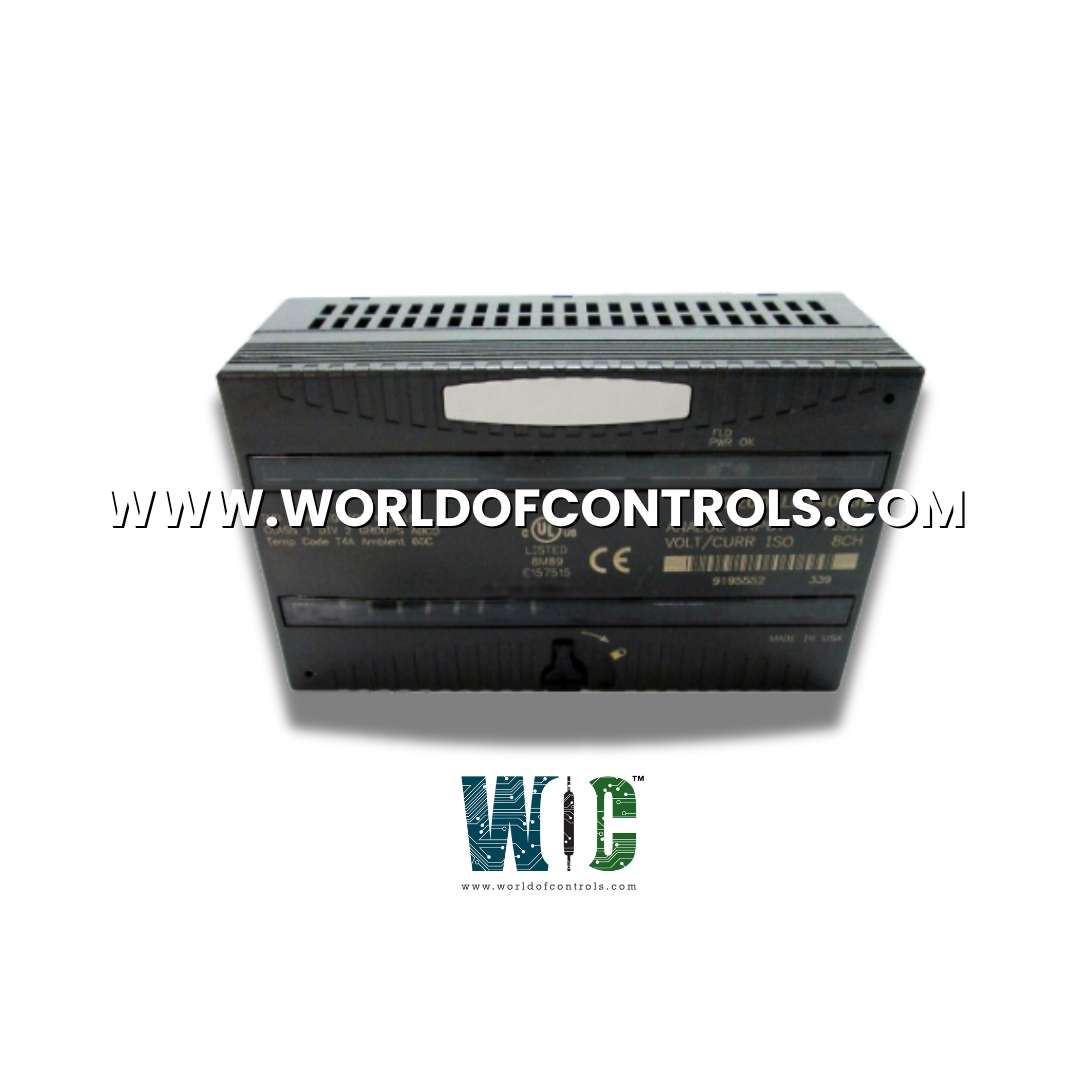
World Of Controls understands the criticality of your requirement and works towards reducing the lead time as much as possible.
IC200ALG240 - 16-Bit Versamax Analog Input Module is available in stock which ships the same day.
IC200ALG240 - 16-Bit Versamax Analog Input Module comes in UNUSED as well as REBUILT condition.
To avail our best deals for IC200ALG240 - 16-Bit Versamax Analog Input Module, contact us and we will get back to you within 24 hours.
SPECIFICATIONS:
Part Number: IC200ALG240
Manufacturer: General Electric
Series: Versamax
Product Type: 16-Bit Versamax Analog Input Module
Number of Inputs: 8
Accuracy: 0.25% at 25 degree Celsius
Operating Modes: Current Mode or Voltage Mode
Input Data: 16-bit Input Data
Update Rate: 13 ms all channels
Backplane Current Consumption: 15 mA at 5V, 120 mA at 3.3V
Voltage Range: -10 to 10 Volts DC
Resolution at 0-20 mA: 5 microamps
Input Impedance: 250 ohms
Frequency: 50 to 60 Hertz
Internal Power Consumption: 120 mA
Availability: In Stock
Weight: 1.5 Kg
Country of Origin: United States
Manual: GFK-1522A
FUNCTIONAL DESCRIPTION:
IC200ALG240 is a 16-Bit Versamax Analog Input Module manufactured and designed by GE Mark II Series as part of the GE Speedtronic Gas Turbine Control Systems. The Analog Input Module with 8 isolated inputs is an intelligent module that accepts input signals from up to 8 analog devices and provides input data with 16 bits of resolution. A separate power supply may be required for isolated inputs in the current mode. Module features include:
The Analog Input Module features 8 analog inputs with 16-bit resolution, �0.1% accuracy at 25�C, and 1500V AC isolation. It supports standalone I/O station configurations and allows hot insertion. The module ensures quick, cost-effective wiring without the need for special tools. It includes a programmable digital field input filter with 50 or 60 Hz notches and diagnostic capabilities such as high/low limits, open wire detection, field power loss, and non-volatile memory fault diagnostics.
CABLE SHIELD CONNECTIONS:
The module is installed on a Terminal-style I/O Carrier (IC200CHS001, 002, or 005) or Compact Terminal-style I/O Carrier (IC200CHS022 or 025), the cable shield can be connected directly to the carrier per the Field Wiring Table. An Auxiliary I/O TerminalStrip (IC200TBM001, 002, or 005) can also be added to the Terminal-style I/O Carriers to assist in grounding shields. If the module is installed on a Compact Terminal-style I/OCarrier (IC200CHS022, 025), shield connections can be made on an Auxiliary I/O terminal that is mounted near the I/O carrier. Be sure to ground the Auxiliary I/OTerminal Strip if you plan to use it for this purpose. If the module is installed on a Connector-style I/O Carrier (IC200CHS003), the cableshield can be connected directly to an Interposing Terminal (IC200CHS011, 012, 015). Be sure to ground the Interposing Terminal. It is recommended to use a shielded interposing cable as well between the Interposing Terminal and the Connector Base. A custom-shielded cable can be made using the Connector kit (IC200ACC302). In addition, a custom shield braid can be wrapped around standard Interposing Cables (IC200CBL105,110, 120, 230). If this approach is used be sure to ground the braid.
OPERATION:
The default parameters of this module can be used in many applications. The module can be software-configured when it is installed in a VersaMax PLC system or an I/O Station controlled by a Network Interface Unit that is version 2.0 or above. The module is configured at startup. If the module is autoconfigured, it will operate with its default features. After configuration, the module begins receiving signals from the input devices connected to it.
CONFIGURABLE FEATURES:
WOC has the largest stock of OEM Replacement Parts for GE Speedtronic Control Systems. We can also repair your faulty boards and supply unused and rebuilt boards backed up with a warranty. Our team of experts is available round the clock to support your OEM needs. Our team of experts at WOC is happy to assist you with any of your automation requirements. For pricing and availability on parts and repairs, kindly contact our team by phone or email.
What is a 16-Bit Versamax Analog Input Module?
A 16-bit Versamax Analog Input Module is an industrial automation component designed to convert analog signals, such as voltage or current, into digital data that can be processed by a Programmable Logic Controller (PLC). It enables precise monitoring and control of analog inputs in industrial applications, allowing for accurate data acquisition from sensors and other field devices.
What are the key features of this module?
The 16-bit Versamax Analog Input Module offers high-resolution signal processing, ensuring precise data conversion for critical automation processes. It supports multiple input types, including voltage and current, making it versatile for various applications. The module is designed to provide high accuracy while minimizing noise interference, ensuring reliable performance in industrial environments.
What input signal ranges does the module support?
This module supports a range of input signal types to accommodate different industrial needs. Commonly supported ranges include 0-10V, 4-20mA, and -10V to +10V, providing flexibility for integration with various sensors and field devices.